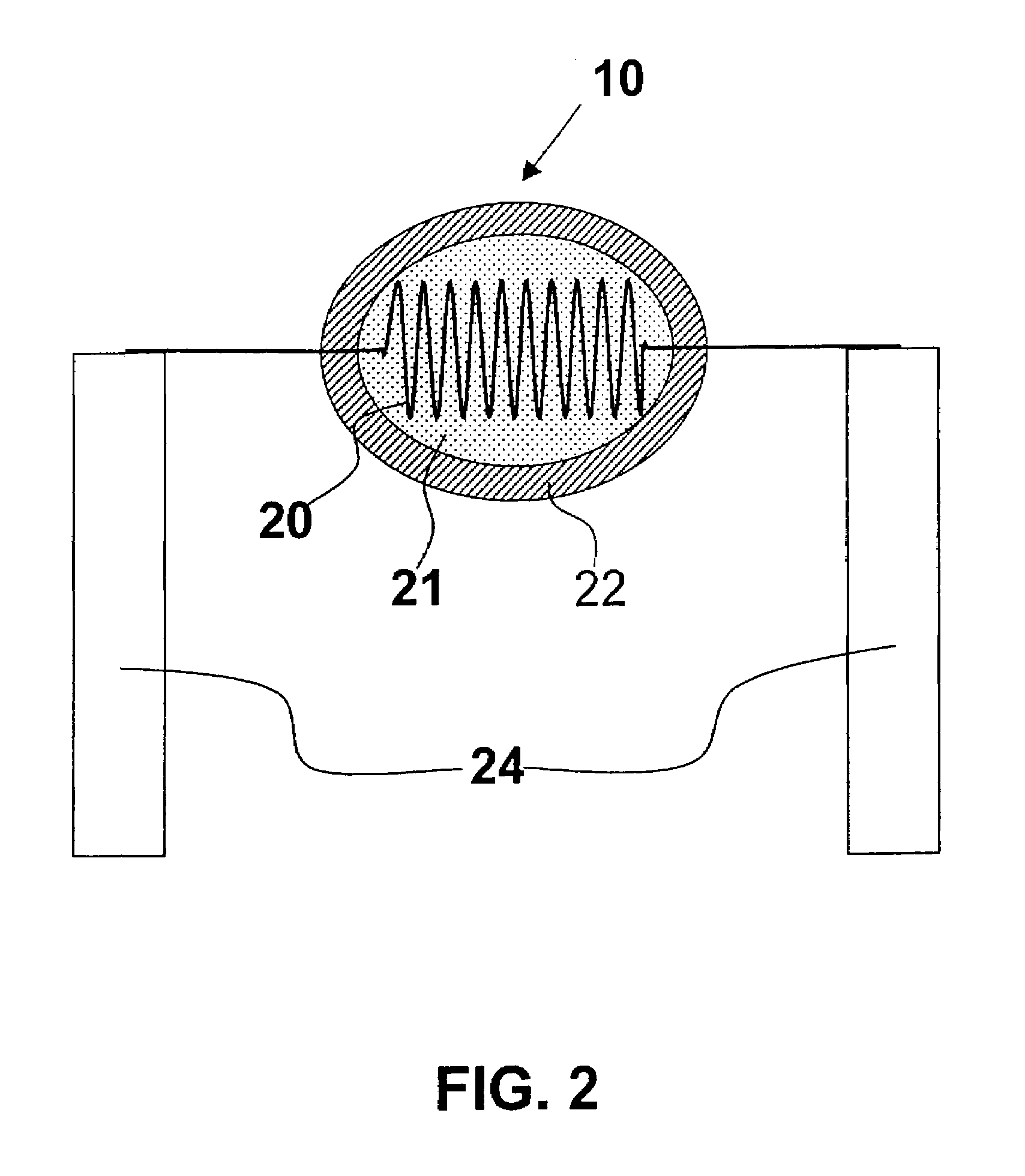Method of warning of poisoning in poison resistant combustible gas sensors
a combustible gas sensor and combustible technology, applied in the field of combustible gas sensors, can solve the problems of increasing power consumption, reducing sensitivity and thus stability, and prone to poisoning or inhibition by certain compounds commonly present in workplace atmospheres, etc., and achieves low cost and effective effect, low cost, and negative baseline drift
- Summary
- Abstract
- Description
- Claims
- Application Information
AI Technical Summary
Benefits of technology
Problems solved by technology
Method used
Image
Examples
example 1
[0066]For fabricating the inner layer 21 of the gas-sensing element 10 in FIG. 2, a slurry “A” is first prepared by adding 0.2 g PdCl2 and 2.0 g porous alumina into 25.0 ml de-ionized water. The slurry “A” is then applied to the coil 20, followed by passing a current through the coil to heat it to 500–700° C. to drive off the water from the slurry, consolidate the alumina deposit and decompose the palladium chloride to palladium oxide and metallic palladium. Multiple coats of slurry are applied and heated until a desired size is obtained. The resulting pellet “P” with only the inner layer 21 as a starting point in all examples.
[0067]For fabricating an outer layer 22 for the gas-sensing element 10, a porous alumina-supported cobalt oxide (CoOx / Al2O3) is first prepared by incipient impregnation of 1.0 g porous alumina with 3.0 ml aqueous solution containing 0.3 g cobalt (II) chloride hexahydrate. The resulting paste is subsequently heated in an oven at 60° C. for 1.5 hrs, 120° C. for ...
example 2
[0069]0.3 g mesoporous sulfated zirconia (32 Å), a solid superacidic material, is added to 3.0 ml de-ionized water to form a slurry “E”, which is then applied onto a pellet “P” described in EXAMPLE 1 to form the outer layer 22. The formation of the gas-sensing element is otherwise carried out in the same manner as in EXAMPLE 1.
example 3
[0070]A solid base, magnesium oxide, is used to coat the inner layer 21 of a pellet “P” described in EXAMPLE 1 to form the outer layer 22. The manufacture processes of the gas-sensing element are otherwise the same as in EXAMPLE 1.
PUM
| Property | Measurement | Unit |
|---|---|---|
| pore diameters | aaaaa | aaaaa |
| temperature | aaaaa | aaaaa |
| resistance | aaaaa | aaaaa |
Abstract
Description
Claims
Application Information
 Login to View More
Login to View More - R&D
- Intellectual Property
- Life Sciences
- Materials
- Tech Scout
- Unparalleled Data Quality
- Higher Quality Content
- 60% Fewer Hallucinations
Browse by: Latest US Patents, China's latest patents, Technical Efficacy Thesaurus, Application Domain, Technology Topic, Popular Technical Reports.
© 2025 PatSnap. All rights reserved.Legal|Privacy policy|Modern Slavery Act Transparency Statement|Sitemap|About US| Contact US: help@patsnap.com



